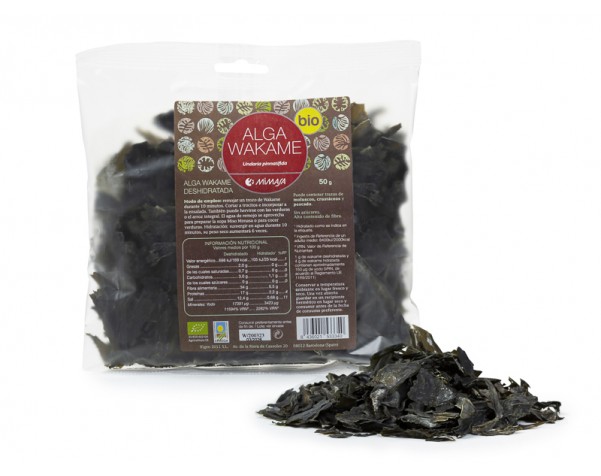NORI from Japan 25g

Free shipping from 299€
 Secure payment with
Secure payment with
Bank transfer, VISA, Mastercard
It is the ideal seaweed if you have never tried any. It is the only one that can be consumed without cooking, and that is why it is used to prepare rolls of rice, vegetables or fish.

There are more than 20 types of nori off the coast of Japan. It is the name of several species of red and green algae that grow in temperate waters of the Atlantic, Pacific and Mediterranean. Its leaves are elongated with very fine edges, almost transparent, with a gelatinous texture. Most nori spreads on the surface of rocks around high tide and a little lower. Harvesting begins in December and ends in April.
The nori, once collected, is washed and shredded. It is soaked in cold water for an hour and dried in the sun, although currently it is usually dried in ovens to meet market demand. The best qualities of nori are thick, compact sheets of a very glossy purple-black color. Lower grades are thinner, brownish-green blades, dull.
- Energy-kJ 1289
- Energy (kcal) 309
- Fat (g) 5,9
- - Saturated (g) 1,9
- Carbohydrate (g) 7.2
- - Sugars (g) 0,0
- Protein (g) 40,7
- Fibre (g) 32.1
- Sodium (g) 1,82
- Salt 4,55
Nori seaweed contains a large amount of vitamins: 8 times more vitamin A than spinach, almost twice the vitamin B1 than pork, 7 times more vitamin B2 than eggs, and about three times the vitamin C of oranges . It is important to note that it is the algae with the highest amount of vitamin A.
Nori is the only seaweed that can be consumed without cooking. MIMASA nori seaweed can be used to prepare rice, vegetable or fish (sushi) rolls.
Roasted on the flame and cut into strips, it is a very tasty snack and an easy way to get a taste of seaweed for the first time.
Porphya yezoensis 100%
25g packet
















